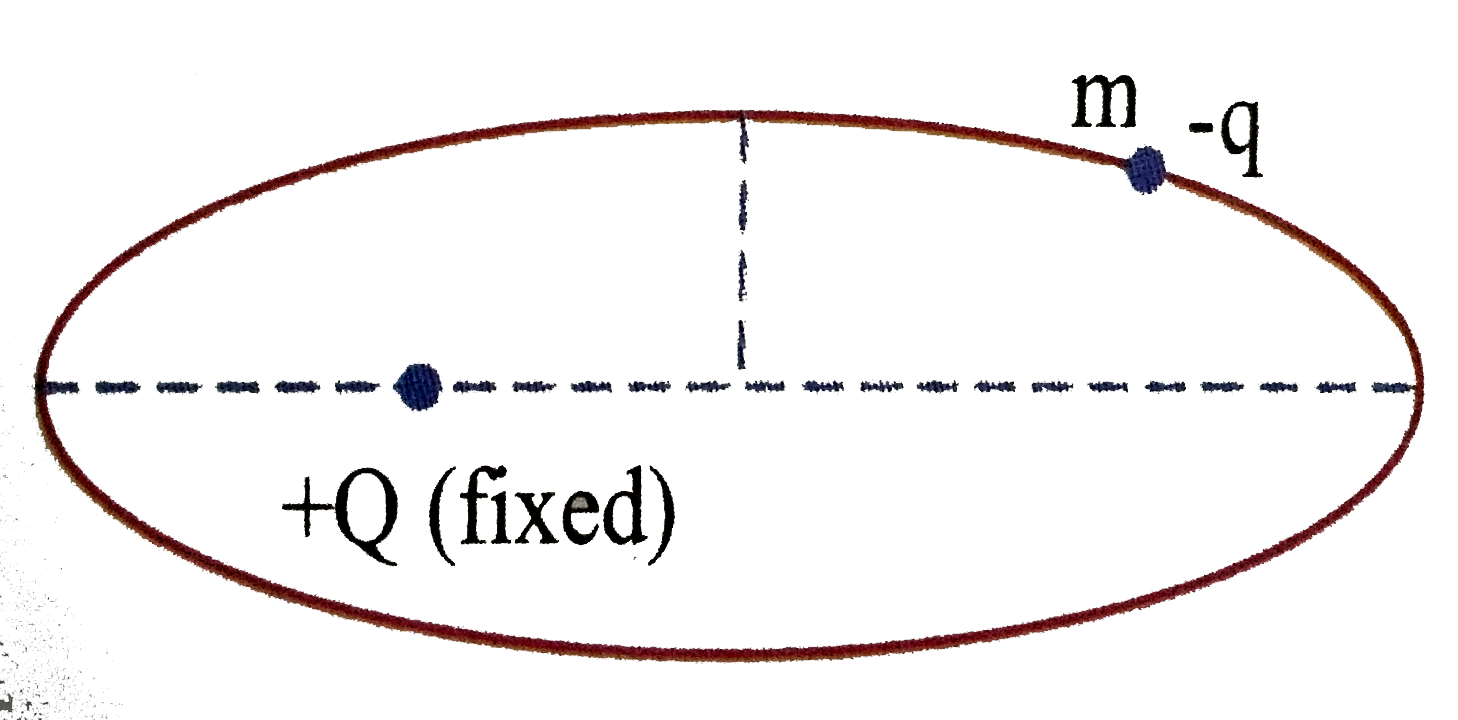In the following diagrams a particle with small charge −q is free to move up or down , but not sideways near a larger fixed charge Q.The small charge is in equilibrium because in the positions shown ,the electrical upward force is equal to the weight of the particle .Which statement os true?

In fig.(A),−q is in stable equilibrium
In fig.(A),−q is in neutral equilibrium
In fig.(B),−q is in stable equilibrium
Neither in fig.A nor in B,−q is in stable equilibrium
The correct Answer is:3
In first diagram , if we displace −q in downward direction , electric force on it decreases , mg≠Fe , it will move down (unstable equilibrium).
In second diagram , if we displace −q in downward direction , electric force on it increases , Fe>mg , net force restores −q to its original position (unstable equilibrium).
Topper's Solved these Questions
Similar Questions
A charged particle always move in the direction of electric field. Is this statement true or false?
View SolutionFigure shows two charge particles on an axis. The charges are free to move. At one point, however, a third charged particle can be placed such that all three particles are in equilibrium.
(a) Is that point to the left of the first two particles to their rightm or between them?
(b) should the third paricle be positively or negatively charged?
(c ) Is the equilibrium stable or unstable?

View Solution
Knowledge Check
Colloidal particles always carry an electric charge which of the following statements is true ?
AAll the colloidal particles carry the same charge.BThe charge changes with the change of temperature.CHalf the colloidal particles carry positive charge and the other half carry negative charge.DNone of theseA particle of charge −q and mass m moves in a circular orbits of radius r about a fixed charge +Q.The relation between the radius of the orbit r and the time period T is
Ar=Qq16π2ε0MT3Br3=Qq16π2ε0MT2Cr2=Qq16π3ε0mT3Dr2=Qq16π3ε0mT3Two charged particles each having a charge +q and mass m are kept at a distance d. if they are in equilibrium under the gravitational force and the electric force between them, then the ratio qm or specific charge of each particle is
A√4πε0GB√4πε0GC4πε0GDG4πε0
Two particles (free to move) with charges +q and +4q are a distance L apart. A third charge is placed so that the entire system is in equilibrium.
(a) Find the location, magnitude and sign of the third charge.
(b) Show that the equilibrium is unstable.
View SolutionCharged particle of charge q mass m moves in a circular path of radius r under the action of force F .The equivalent current is
View SolutionA charge particle q1, is at position (2, -1, 3). The electrostatic force on another charged particle q2 at (0, 0, 0) is :
View SolutionThe force acting on a particle of charge q moving in a uniform magnets field with velocity v is
View SolutionA positive point charge +Q is fixed in space .A negative point charge −q of mass m revolves around a fixed charge in elliptical orbits .The fixed charge +Qis at one focus of the ellipse.The only force acting on negative charge is the electrostatic force due to positive charge is the electrostatic force due ot positive charge.Then which of the following statement is true

View Solution
